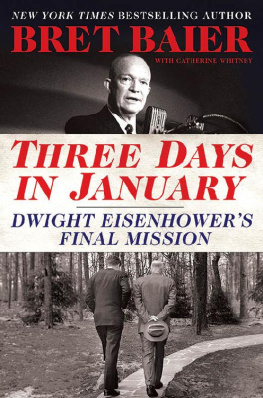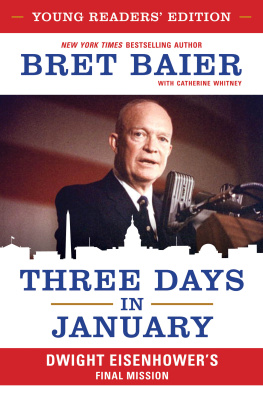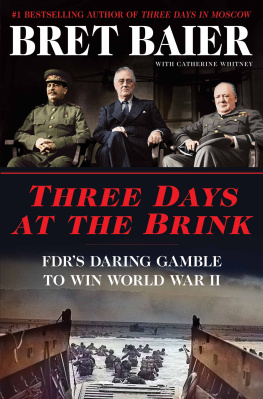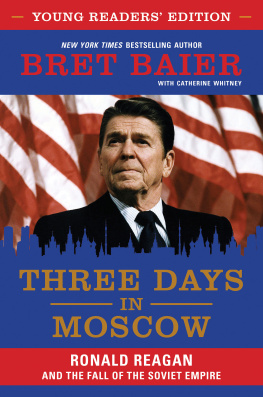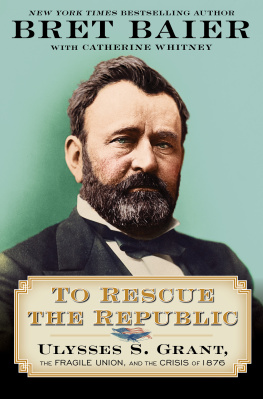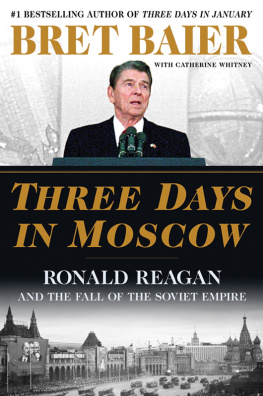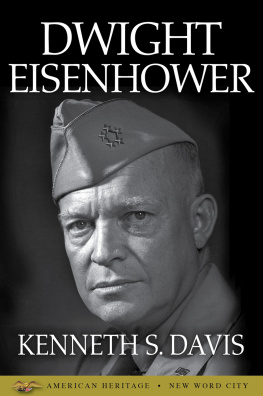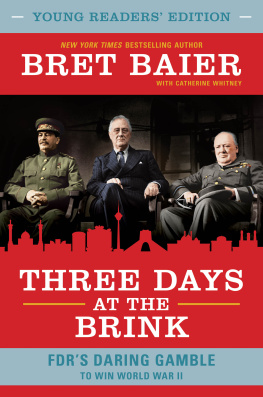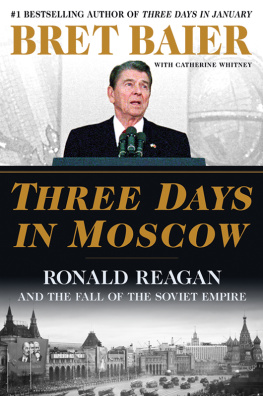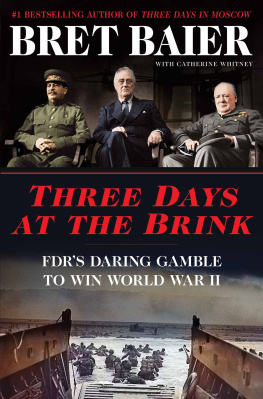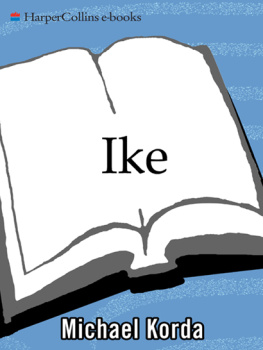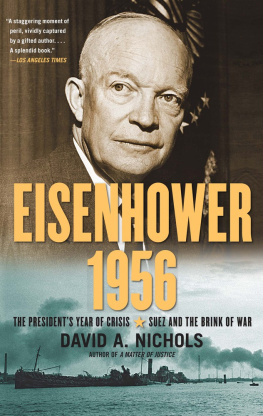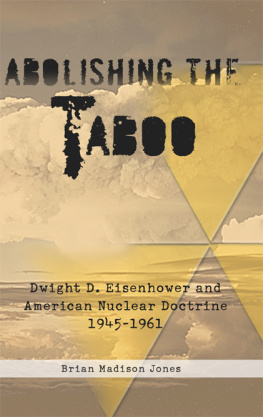Bret Baier - Three Days in January: Dwight Eisenhower’s Final Mission
Here you can read online Bret Baier - Three Days in January: Dwight Eisenhower’s Final Mission full text of the book (entire story) in english for free. Download pdf and epub, get meaning, cover and reviews about this ebook. year: 2017, publisher: William Morrow, genre: Non-fiction. Description of the work, (preface) as well as reviews are available. Best literature library LitArk.com created for fans of good reading and offers a wide selection of genres:
Romance novel
Science fiction
Adventure
Detective
Science
History
Home and family
Prose
Art
Politics
Computer
Non-fiction
Religion
Business
Children
Humor
Choose a favorite category and find really read worthwhile books. Enjoy immersion in the world of imagination, feel the emotions of the characters or learn something new for yourself, make an fascinating discovery.
- Book:Three Days in January: Dwight Eisenhower’s Final Mission
- Author:
- Publisher:William Morrow
- Genre:
- Year:2017
- Rating:4 / 5
- Favourites:Add to favourites
- Your mark:
Three Days in January: Dwight Eisenhower’s Final Mission: summary, description and annotation
We offer to read an annotation, description, summary or preface (depends on what the author of the book "Three Days in January: Dwight Eisenhower’s Final Mission" wrote himself). If you haven't found the necessary information about the book — write in the comments, we will try to find it.
The blockbuster #1 national bestseller
Bret Baier, the Chief Political Anchor for Fox News Channel and the Anchor and Executive Editor of Special Report with Bret Baier, illuminates the extraordinary yet underappreciated presidency of Dwight Eisenhower by taking readers into Ikes last days in power.
Magnificently rendered. Destined to take its place as not only one of the masterworks on Eisenhower, but as one of the classics of presidential history. Impeccably researched, the book is nothing short of extraordinary. What a triumph!JAY WINIK, New York Times bestselling author of April 1865 and 1944
In Three Days in January, Bret Baier masterfully casts the period between Eisenhowers now-prophetic farewell address on the evening of January 17, 1961, and Kennedys inauguration on the afternoon of January 20 as the closing act of one of modern Americas greatest leadersduring which Eisenhower urgently sought to prepare both the country and the next president for the challenges ahead.
Those three days in January 1961, Baier shows, were the culmination of a lifetime of service that took Ike from rural Kansas to West Point, to the battlefields of World War II, and finally to the Oval Office. When he left the White House, Dwight Eisenhower had done more than perhaps any other modern American to set the nation, in his words, on our charted course toward permanent peace and human betterment.
On January 17, Eisenhower spoke to the nation in one of the most remarkable farewell speeches in U.S. history. Ike looked to the future, warning Americans against the dangers of elevating partisanship above national interest, excessive government budgets (particularly deficit spending), the expansion of the military-industrial complex, and the creeping political power of special interests. Seeking to ready a new generation for power, Eisenhower intensely advised the forty-three-year-old Kennedy before the inauguration.
Baier also reveals how Eisenhowers two terms changed America forever for the better, and demonstrates how today Ike offers us the model of principled leadership that polls say is so missing in politics. Three Days in January forever makes clear that Eisenhower, an often forgotten giant of U.S. history, still offers vital lessons for our own time and stands as a lasting example of political leadership at its most effective and honorable.
Bret Baier: author's other books
Who wrote Three Days in January: Dwight Eisenhower’s Final Mission? Find out the surname, the name of the author of the book and a list of all author's works by series.

